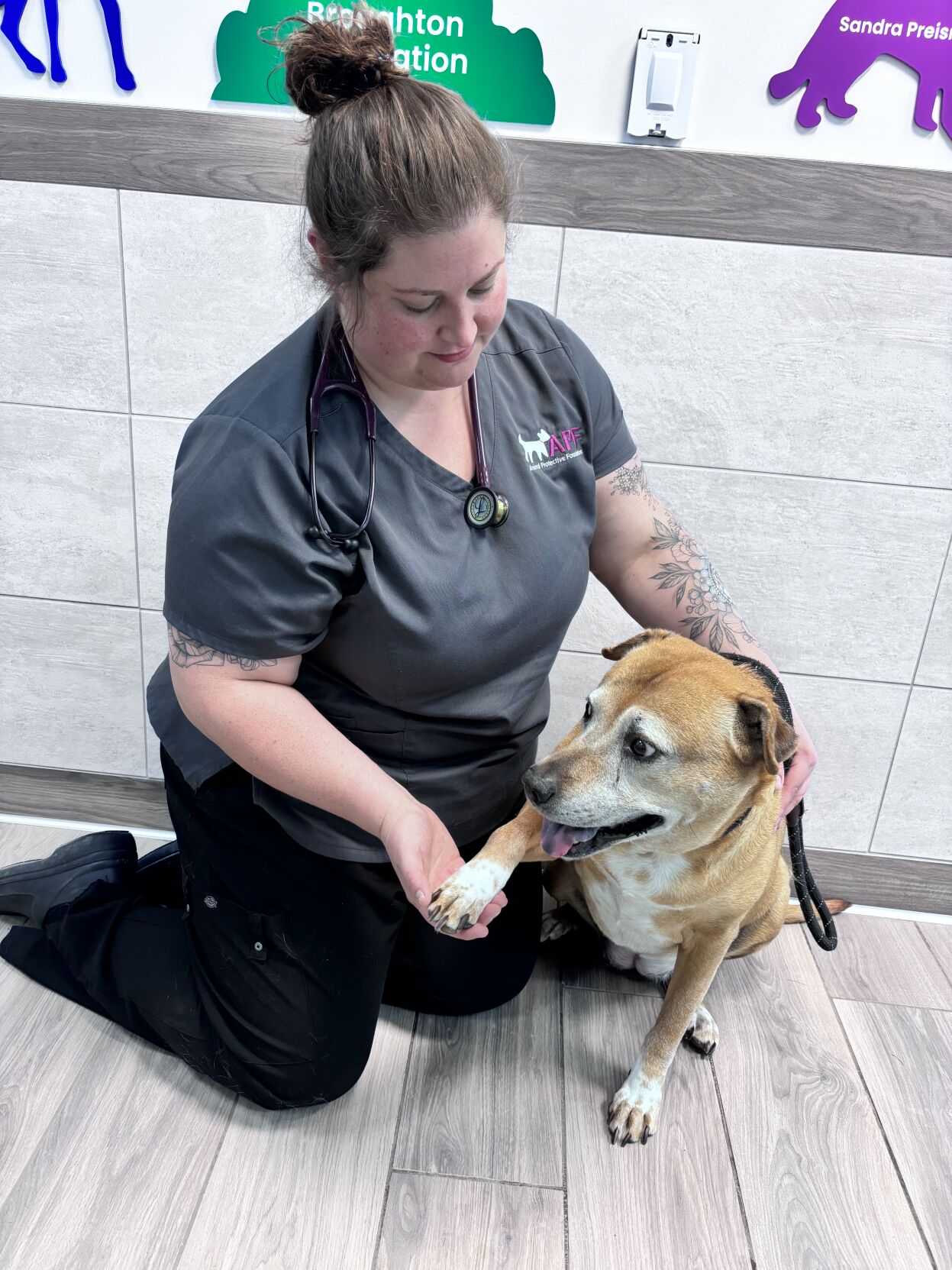By Sara Sosnow, DVM
Our pets bring us so much joy and happiness. They are our family members, best friends, cuddle buddies, security systems, vacuums, hunters, bird watchers — and some are even famous on the internet!


Photo provided. Sosnow evaluating a senior dog.
By Sara Sosnow, DVM
Our pets bring us so much joy and happiness. They are our family members, best friends, cuddle buddies, security systems, vacuums, hunters, bird watchers — and some are even famous on the internet!
As much as we wish they would live forever, pet owners often face the difficult decision of euthanasia when their beloved companions no longer have a good quality of life. Euthanasia, meaning a “good death,” is an emotional burden, but it is also a final act of love and kindness we can offer our pets.
The practice of animal euthanasia has evolved significantly over centuries, just as our relationship with pets has deepened. Modern veterinary medicine provides guidelines for the most humane, painless and compassionate methods of euthanasia. Today there are even veterinarians dedicated solely to providing in-home euthanasia services for family pets.
Despite these advancements, making an end-of-life decision for our pets remains an emotionally challenging experience.
Some pets give us obvious signs that they are suffering and no longer experiencing a good quality of life, such as constant pain, inability to rest or sleeping excessively, loss of appetite, changes in behavior or aggression and uncontrolled urination or defecation. However, other signs can be more subtle and challenging to interpret.
It’s crucial to not prolong a pet’s suffering even if they continue to eat or venture outdoors. Just because a pet is still engaging in some activities doesn’t necessarily mean they have a decent quality of life.
Consulting with a veterinarian is an important step when considering end-of-life decisions for your pet. They can examine your animal, gauge their level of pain or discomfort, diagnose underlying conditions, prescribe pain management or supportive care and offer expert guidance on whether euthanasia is appropriate. Their knowledge and experience can help you make an informed decision during this difficult time.
To assess your pet’s quality of life at home, consider three of their favorite activities (car rides, jumping up to snuggle in bed, going for a walk outside, etc.) and observe if they still engage in them. Additionally, track “good” days — where your pet finishes meals, plays or enjoys other activities — versus “bad” days characterized by accidents, pain, not eating or restlessness. Seeking input from family and friends who don’t see your pet regularly can provide a fresh perspective, as they may notice changes you’ve grown accustomed to over time.
For a more objective assessment, several guidelines and scales, such as the “HHHHHMM Scale” developed by Dr. Alice Villalobos, help pet owners make informed euthanasia decisions. This tool assigns numeric values to these factors: hurt, hunger, hydration, hygiene, happiness, mobility and more good days than bad, providing a clearer picture of your pet’s well-being. Tracking these scores over time can reveal trends and help you determine when it might be time to say goodbye.
Once an end-of-life decision has been made, several compassionate euthanasia options are available. You can choose in-office euthanasia at your veterinarian’s clinic; in-home euthanasia provided by your vet or providers who specialize in at-home services; or, starting this summer, the Animal Protective Foundation will offer compassionate public euthanasia at our shelter with an appointment service.
It can be extremely challenging to make an end-of-life decision for our pets. It’s normal to feel uncertain, overwhelmed or even to question your choice. Finding support through your vet, loved ones or pet-loss support groups can help ease the pain of such an emotional choice. Remember, by providing a peaceful, dignified passing, you are giving your pet a final gift of love and compassion, allowing you to cherish the happy memories you shared together.
Dr. Sara Sosnow is the shelter and community engagement veterinarian at Animal Protective Foundation. APF contributes Animal Chronicles articles and welcomes animal-related questions and stories about the people and animals in our community. Visit animalprotective.org, follow us on social media @AnimalProtectiveFoundation or email chronicles@animalprotective.org.
Sorry, an error occurred.
Already Subscribed!
Cancel anytime
Thank you .
Your account has been registered, and you are now logged in.
Check your email for details.
Submitting this form below will send a message to your email with a link to change your password.
An email message containing instructions on how to reset your password has been sent to the email address listed on your account.
No promotional rates found.
Thank you.
Your gift purchase was successful! Your purchase was successful, and you are now logged in.
| Rate: | |
| Begins: | |
| Transaction ID: |
A receipt was sent to your email.